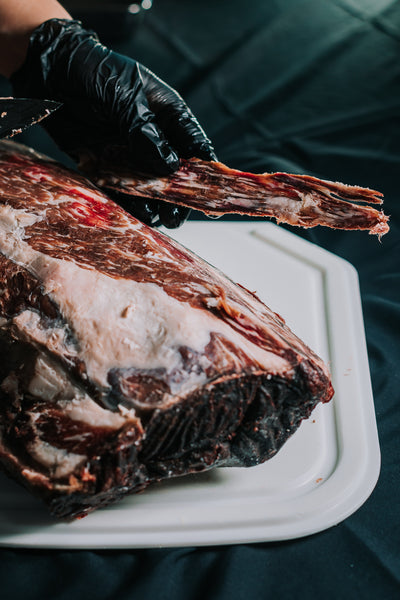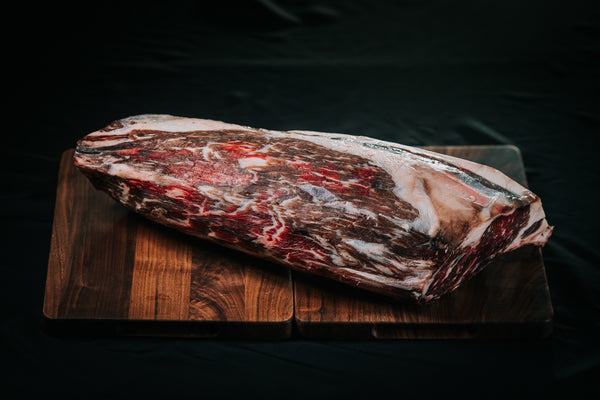What is Dry Age
Dry Aging is a process where meats are kept uncovered in a precise and carefully controlled environment from several weeks to months.
The beef are kept near freezing temperatures, at controlled humidity and with constant airflow.
This process changes the beef in 3 ways
1. Moisture loss – Moisture from the beef is evaporated to the surrounding environment which concentrates the beef’s flavour. Furthermore, the outer layer of the meat exposed to air would develop a dry crust/desiccated pellicle which protects the interior of the meat. This hard and dry pellicle would have to be trimmed before cooking.

After moisture loss and trimming of the pellicle, there would be a total loss about 30% weight from the original product.
Because so much of the meat’s weight is lost, and the special environment it must be kept at, Dry Aged beef comes at a significant premium.
2. Tenderisation – Natural enzymes present in the beef would slowly break down the connective tissues and fibres of the beef, making it more tender
3. More Flavourful – The enzymes would also break down the muscle proteins into amino acid (e.g. glutamate) creating natural ‘MSG’, increasing the beef’s umami taste.
As the fat of the beef is exposed to the air, it would break down and oxidise, developing woody notes of mushroom and cheese, and having the texture of bone marrow. We highly recommend you consume this delicious fat as we are sure you would have never tasted something like this before.
Furthermore, good bacteria and mould found in the pellicle (usually only for longer aged cuts) would help develop complex flavours very similar to blue cheese.
However, not all cuts of beef can and should be dry aged.
Firstly, only beef of a higher grade (at least USDA Choice/Wagyu) can be dry aged, due to their inherent marbling (i.e. intramuscular fat), which would benefit from dry aging. This means, the regular steaks you get from your supermarket or butchers most likely would not make the cut

Secondly, individual steaks cannot be economically dry aged due to the loss in pellicle trimmings. Only whole subprimal/primal (whole rack) of meat should be dry aged.

Lastly, the cut of meat should have a protective layer of fat and preferably have the bone-in. The fat layer reduces excessive moisture loss, keeping the meat tender and moist. Leaving the bone-in acts as another barrier of protection as well as a conduit for good bacteria and enzymes to flourish. This is why the meat nearest to the bone tend to be the most flavourful and sought after.
